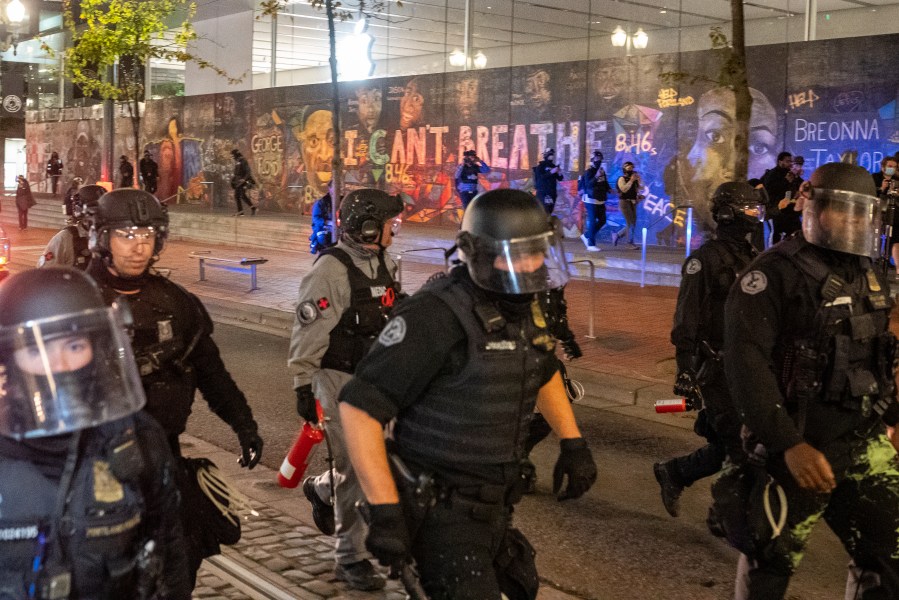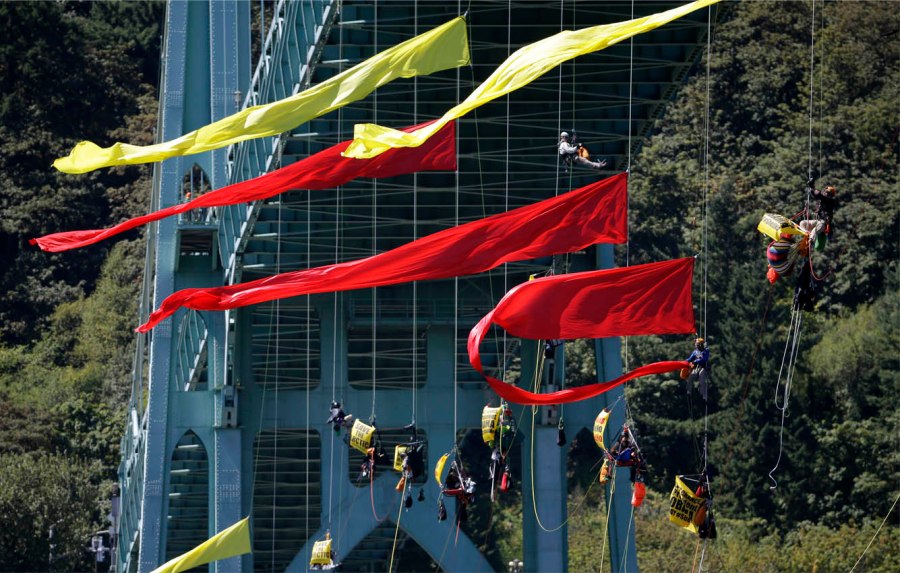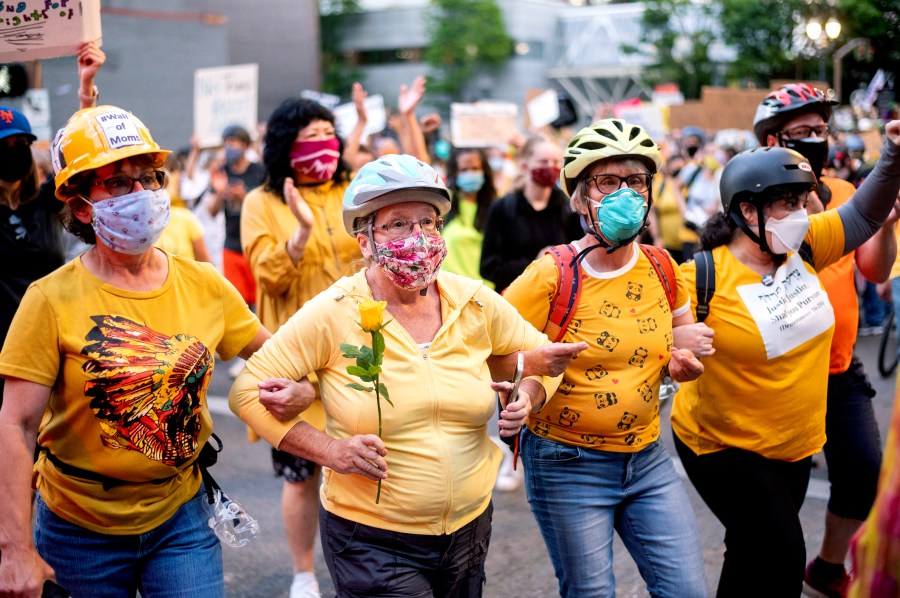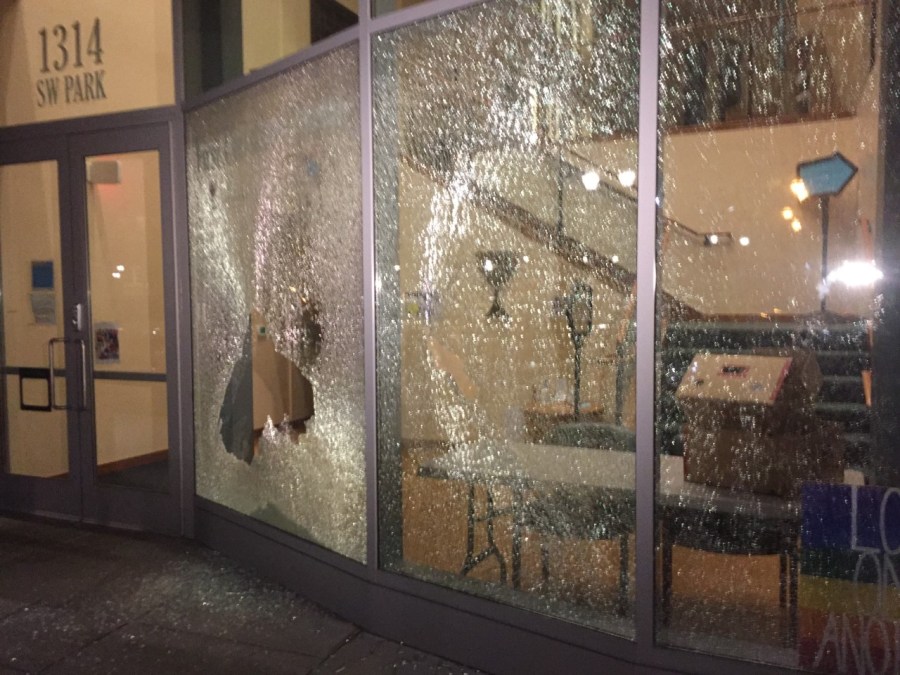Editor’s note: This is part two of an ongoing series this week through May 17 looking into issues the City of Portland faces. Click here for the full series, send us your comments to isportlandover@koin.com and tune in Monday, May 17 at 7 p.m. for our hourlong special.
PORTLAND, Ore. (KOIN) — The public expression of objection — otherwise known as a protest — is woven into the very fabric of Portland’s culture.
After George Floyd was murdered in Minneapolis in May of 2020, Portlanders took to the streets every day for weeks that stretched into months, capturing the nation’s attention even during a pandemic.
Shortly after Derrick Chauvin was convicted of the murder, George’s brother Rodney Floyd acknowledged the Portland protests for keeping the issue of racial injustice in the national consciousness.
“I would like to thank all the advocates, the activists,” said Rodney Floyd. “I’d like to thank the people who stayed in these streets, marching, night and day. People in Portland stayed in the streets for 83 days, I think I may be wrong, but thankful for everyone who stayed out there, making a statement for us and carrying us during our dark days.”

Activist Cameron Whitten was a leader in the Occupy Portland movement of 2011, protesting excesses on Wall Street. The occupation lasted 39 days before police finally broke it up.
“We had the largest physical occupation in the entire country,” Whitten recalled.
A year later, he staged a 55-day hunger strike outside Portland City Hall to bring attention to homelessness issues. Whitten went on to found the Black Resilience Fund shortly after Floyd’s murder.
“This was not the first time that we heard ‘I can’t breathe.’ This is the not first time that we saw a Black man’s life slowly stolen away on camera,” he said.
Whitten has been a part of nearly every major peaceful protest in Portland for nearly a decade.
“Portland has always had a history and a legacy of grass-roots direct action. So if you were surprised about Portland doing these protests, you don’t know Portland,” he said. “I see it as one of our greatest strengths — that people care so much that they’re willing to get out of their houses, get off of their couches and to show up for something, collectively, for a unified voice.”
Former President George H.W. Bush once called Portland “Little Beirut” during anti-war protests in the 1990s, comparing Portland to the bombed-out capitol city of Lebanon in the Middle East.

In 1970, Oregon Governor Tom McCall sponsored a music festival called Vortex to distract protesters away from an American Legion convention in downtown Portland. It mostly worked.
“I know it costs money. It shouldn’t be done but the whole alternative is the possibility of bloodshed,” McCall said at the time.
Still, Portland has seen its share of violent protests, from May Day riots to the World Trade Organization demonstrations to protests outside the Immigration and Customs Enforcement building in South Waterfront.
The city has also seen creative demonstrations that attracted national attention, such as eco-terrorist Tre Arrow’s 11-day sit-in on a ledge at the U.S. Forest Service building in downtown Portland to protest logging in the Eagle Creek Wilderness. In 2015, Greenpeace activists suspended themselves from the St. Johns Bridge to block the icebreaker Fennica from traveling to the Alaskan oil fields after repairs at Swan Island. They delayed the ship for nearly two days.

But the 100 days of “direct action” demonstrations and protests following George Floyd’s death set a new standard for longevity, the thousands of people who took to the streets and the diversity of those who came together, including the so-called Wall of Moms.
“I’m just happy to see them because I think we had to change the narrative,” said Judy Thodos in July of 2020. “I’m getting calls from friends around the country and they think the city’s on fire or something.”
The unrest took over a small part of Portland night after night. Clashes between law enforcement and protesters caught the attention of much of the nation, including the White House.
“The Department of Homeland Security and the Department of Justice are announcing a joint operation center to investigate the violent, left-wing civil unrest,” said President Donald Trump. “And again, in Portland alone, the federal government has already taken care of and arrested 100 rioters.”
“If people are showing up and saying ‘stop killing us,’ you don’t attack them with tear gas and rubber bullets and chemical agents. You don’t ride around in minivans and rented cars and vehicles and throw them in the back of it. People are already traumatized or they wouldn’t show up,” said Teressa Raiford, the executive director of Don’t Shoot Portland.
Don’t Shoot Portland organized many of the demonstrations following George Floyd’s death. Raiford also co-founded the Wall of Moms. Both organizations sued the DHS over the federal response to the unrest in Portland.
“I don’t think that any riot that happened in Portland happened because protesters said ‘let’s go riot,'” said Raiford. “I think the riot ensued because of the response from the city and the federal agencies — and again, that’s why we take it to the courts.”

The lawsuit is still pending, though Raiford said it will likely not move forward since there’s a new administration leading the country.
But the issue of violent demonstrations or riots is again front and center as property damage adds up and businesses struggle to survive during the COVID-19 pandemic.
“I think that they’re tearing down our community and they’re teaching our kids wrong!” said Northeast Portland resident Lady Leo. “Look at these kids, these kids done grew up in this community. Now they can’t even sit down and eat a piece of chicken because they’ve torn up the damn store!”
Those who have been arrested and charged for the destruction are mostly young and mostly white. The Black Lives Matter message has been drowned out by the mayhem. So who is responsible?

“What we need to first say is: who are we talking about? When we say BLM, when we say antifa — those are not the same things,” said Whitten.
Whitten said it simply comes down to this: “There’s individuals who are breaking the law and they’re committing property damage.”
“There’s a global pandemic and in Portland, we’ve had over 40 shootings in the summertimes and several homicides and people still ask me questions about broken windows,” said Raiford. “We couldn’t even get any police response to families that watched their children get murdered outside their homes!”
Portland’s protest culture is rooted in issues — from race to deadly police interactions to war — that have plagued communities for generations. The reaction to the murder of George Floyd and others is just the latest example of Portland leading the nation by example.
“We see people in positions of power that want to silence us and we have to do whatever we can not to be silenced,” Whitten said.
The struggle continues.
We want to hear from you. Send us your comments to isportlandover@koin.com and tune Monday, May 17 for an hour-long special at 7 p.m.
Editor’s Note: “Don’t Shoot Portland” tells KOIN 6 they were not the primary organizers of last summer’s protests. However, they provided direct support, advocacy, and legal assistance for protestors, and Portlanders affected by protests and violence throughout the city.”Don’t Shoot Portland” also provided mutual aid in Oregon to support people affected by COVID-19, using their extensive network, during the protests.